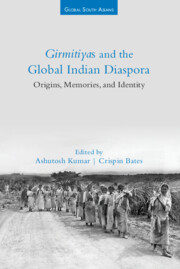9 - Memory, Nostalgia and Reality: A Socio-Historical Perspective of Culture and Education in The Grey Street Complex
Published online by Cambridge University Press: 20 April 2024
Summary
As the globe has experienced increasing population shifts from rural peripheries to towns and cities, urban expansion has become one of the most complex challenges. The fabric and form of every city is continually restructured to cater to the arrival of new entrants and aspirants. Whether urban communities have been favoured or disadvantaged by such modifications, they remain inherently associated with their unique urban identity and its place-relationship. This is because the identity of a city (with its urban morphology) becomes history once it is altered, and the placerelationship remains perpetual and preserved in the emotional memories of its urbanites. The mnemonic and emotional elements of a particular location have long played essential roles in understanding the history of socio-demographic dimensions of urban environments. The South African experience has been no different.
The socio-spatial systems of South African cities reflect the history of apartheid and its plethora of consequences for various disadvantaged groups. Thus South African urban history has been a vital aspect for understanding the contemporary shapes and forms of its cities. The changing form of the central business district (CBD) of Durban, one of South Africa's major urban nodes, for example, has captured the attention of scholars from various disciplines. It has become a focus for researchers due to its remarkably rich history and diverse culture.
The historic distinctive trait of the Durban city centre was that it contained two CBDs: a white one at the core and an adjacent Indian business sector. From the late nineteenth century, it was in this precinct (currently renamed after Yusuf Dadoo, an anti-apartheid activist) that many indentured and passenger Indians in Natal inexorably planted their footprints. Previously a legislated Indian Group Area, this precinct formed a fundamental economic and commercial component of the Indian CBD and served as an important contributor to the urban economy during the apartheid era. It also served as an incubator for numerous Indian entrepreneurs and business houses, many of which have still retained their operations there to this day. The presence of multifarious Indian businesses not only brought about a sense of belonging but also gave this complex a cultural vibrancy. Often called a ‘home away from home’ for the South African urban Indian population, the complex encapsulated a rich cultural ambience with great recreational and institutional significance.
- Type
- Chapter
- Information
- Girmitiyas and the Global Indian DiasporaOrigins, Memories, and Identity, pp. 197 - 224Publisher: Cambridge University PressPrint publication year: 2024



